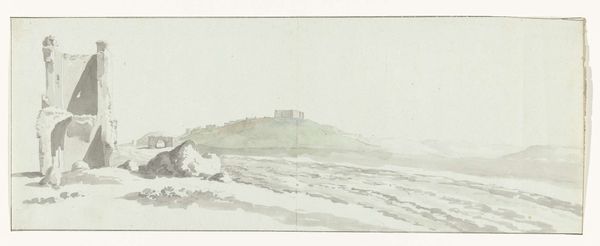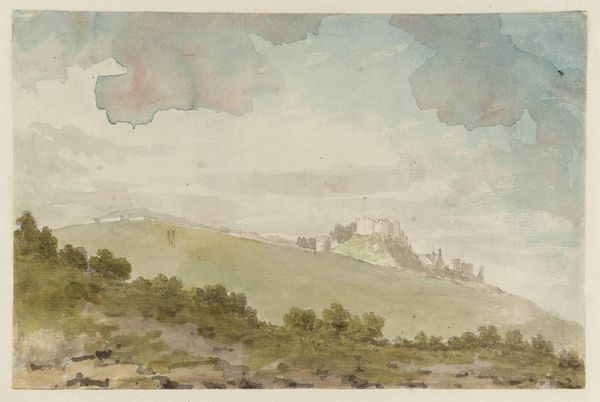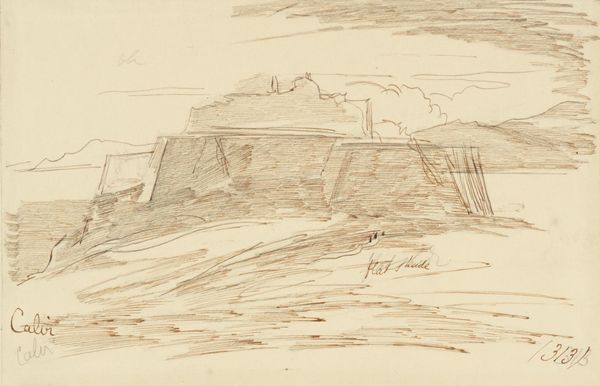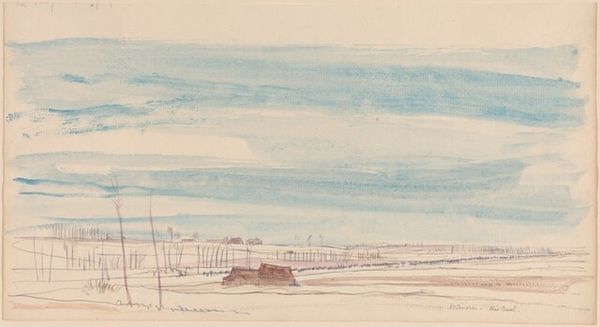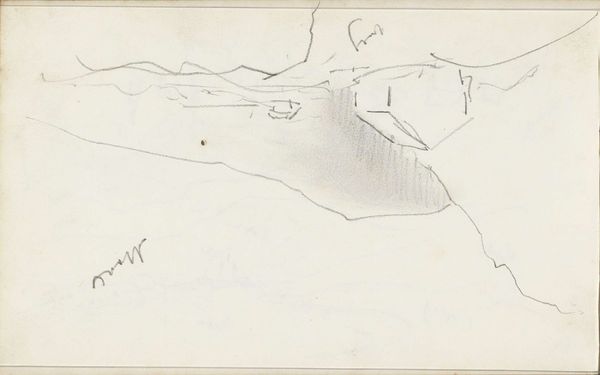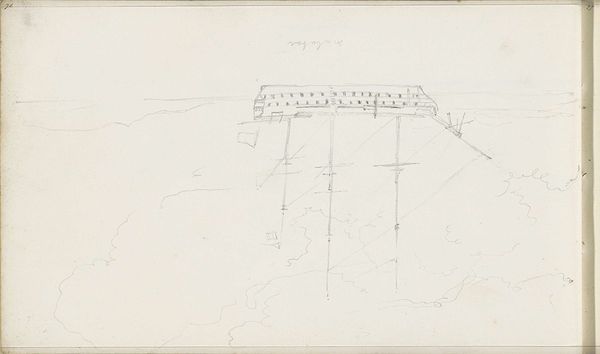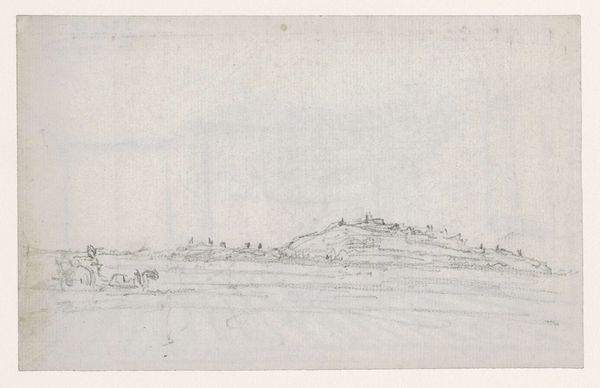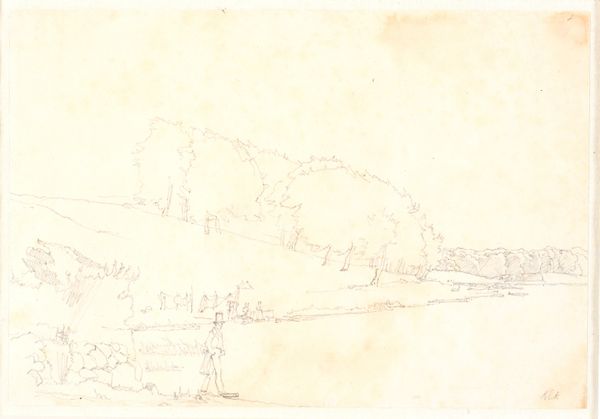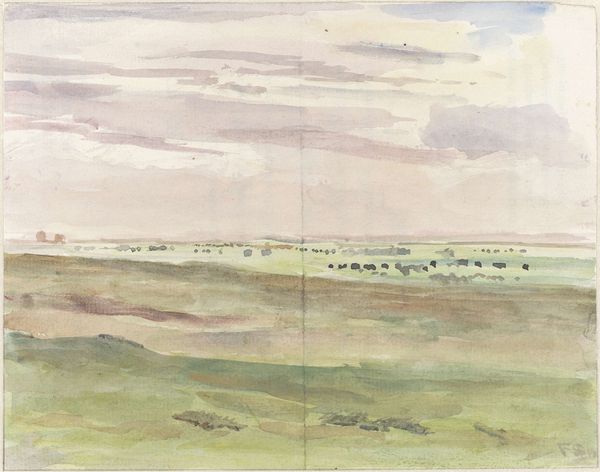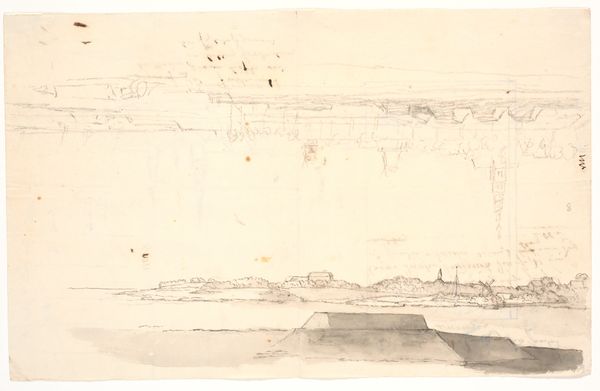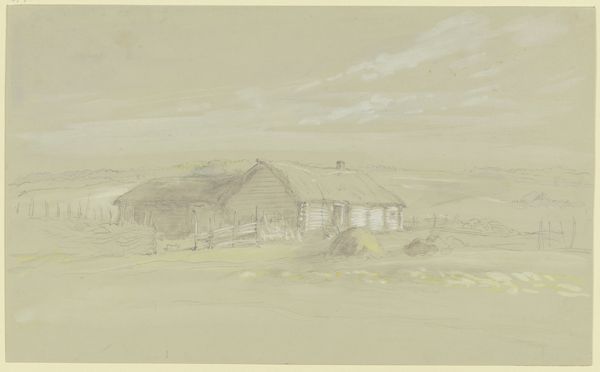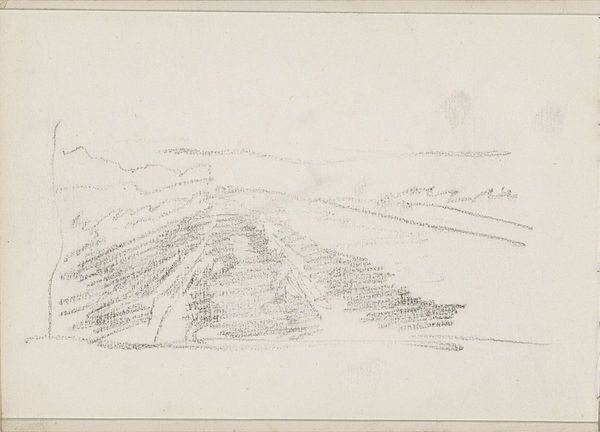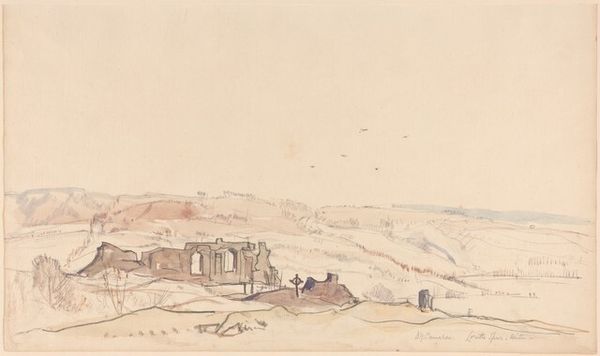
Dimensions: height 479 mm, width 519 mm
Copyright: Rijks Museum: Open Domain
Curator: Louis Ducros created "Klassieke zuil in haven van Brindisi," or "Classical Column in the Port of Brindisi," in 1778. The Rijksmuseum houses this etching and watercolor landscape. What's your initial take on this piece? Editor: It evokes a wistful tranquility. The muted tones and the haziness create a sense of distance, both spatial and temporal, inviting contemplation of ruins of empires. Curator: Ducros emphasizes balance. He achieves a unique effect by contrasting the solid geometric forms of the foreground structure with the layered, soft hill and sky in the distance, structuring space itself as a dichotomy between near and far, form and chaos. Editor: Indeed, that weathered structure dominating the foreground anchors the eye, a stage setting for historical drama. I see that classical column as more than just architecture; it's a symbol of Roman power, now faded yet still reaching, evoking nostalgia for a lost golden age. It resonates with the romanticism of the era. Curator: The very use of etching combined with watercolor produces nuanced layering, both structural and tonal, that is technically adept. Ducros' choice to depict the landscape en plein air, a choice declared via medium in addition to its depiction of light, emphasizes the empirical mode and conditions of its creation. Editor: Precisely, plein air enhances that romantic ideal of encountering the sublime in nature. The etching lends the landscape a documentarian feel. So there's a subtle dialogue here, between an objective visual record and subjective interpretation, about our perception of time itself. Curator: Well said. Ducros’s composition deftly mediates subjective mood with measured geometric progression. It exemplifies the late-eighteenth-century landscape tradition as much as it does any yearning gaze into the past. Editor: I agree. We witness in this work the birth of historical and cultural memory intermingling with personal experience. Ducros offers a perspective of the past, one always mediated by the present. Curator: A fitting summation of the image's conceptual dexterity. Editor: Indeed, it resonates deeply with notions of history and the evocative power of place.
Comments
No comments
Be the first to comment and join the conversation on the ultimate creative platform.
